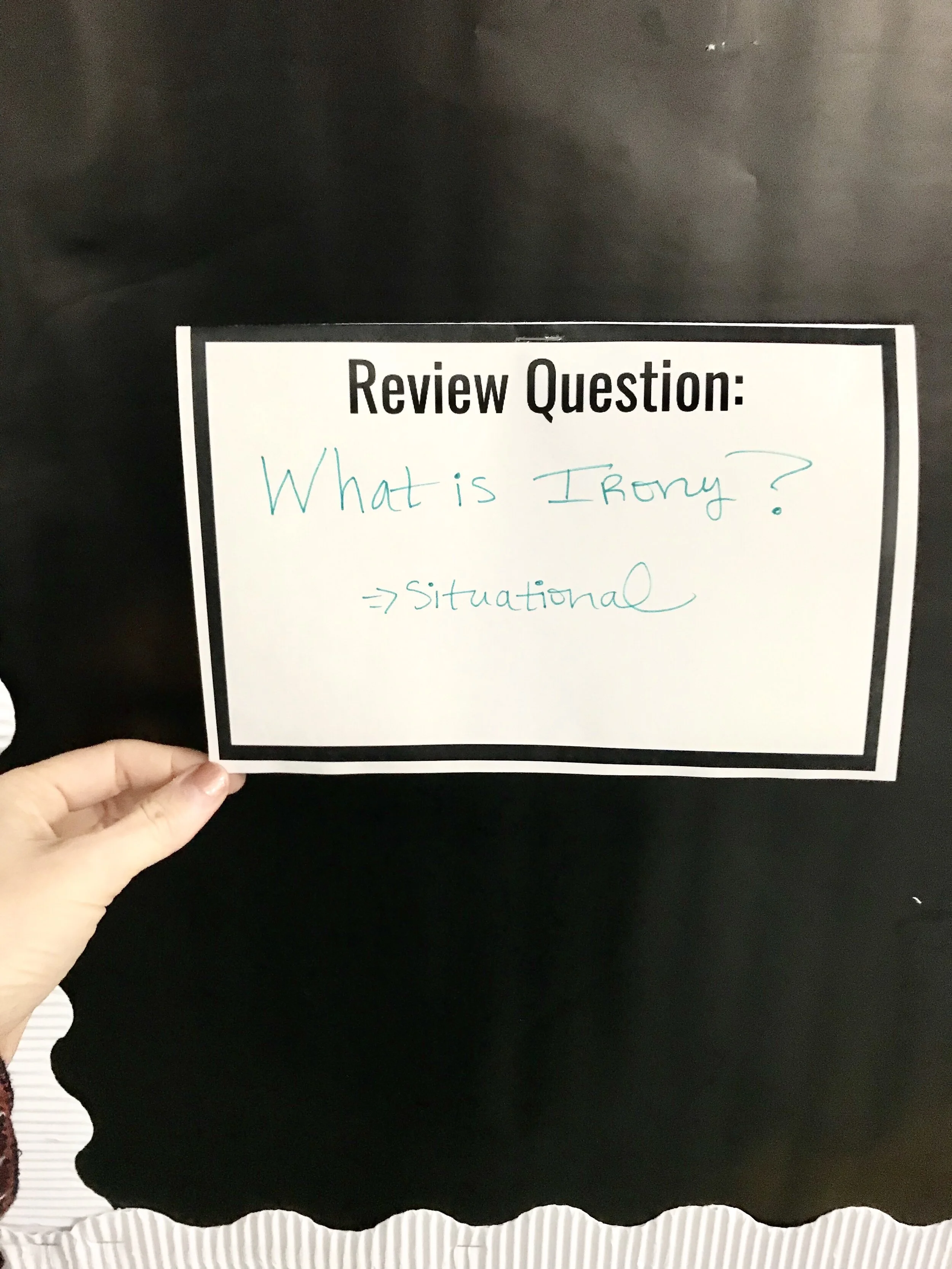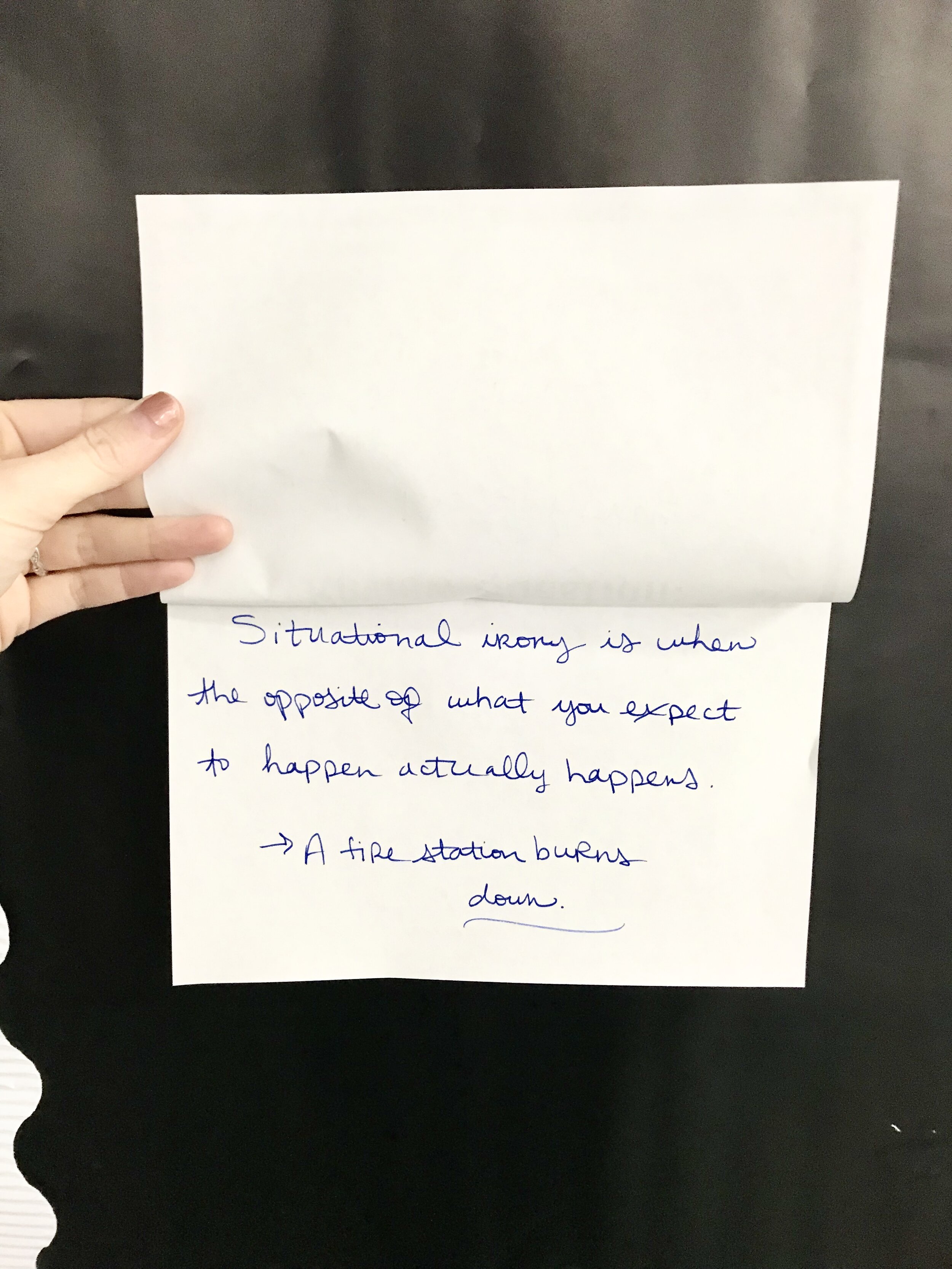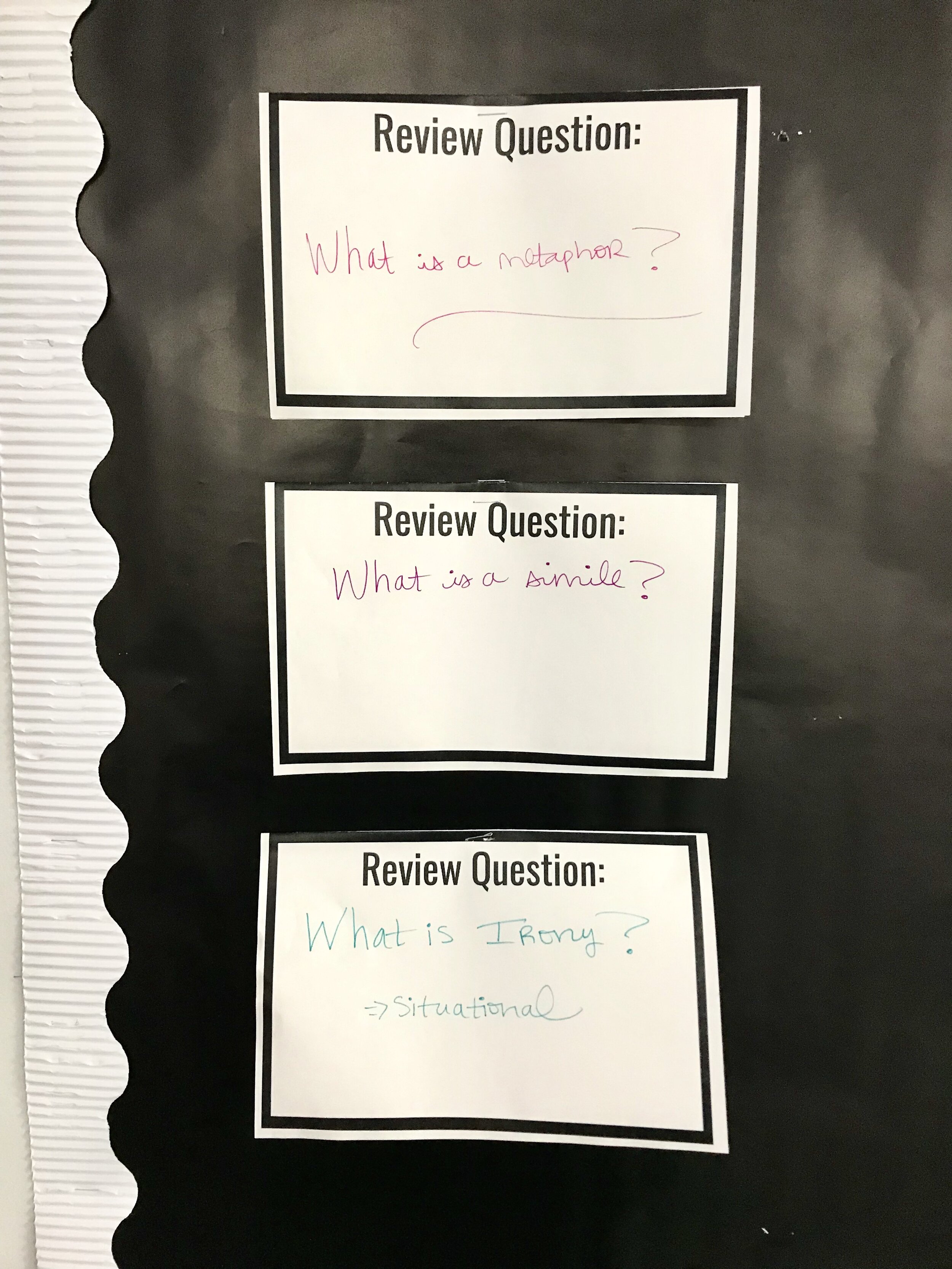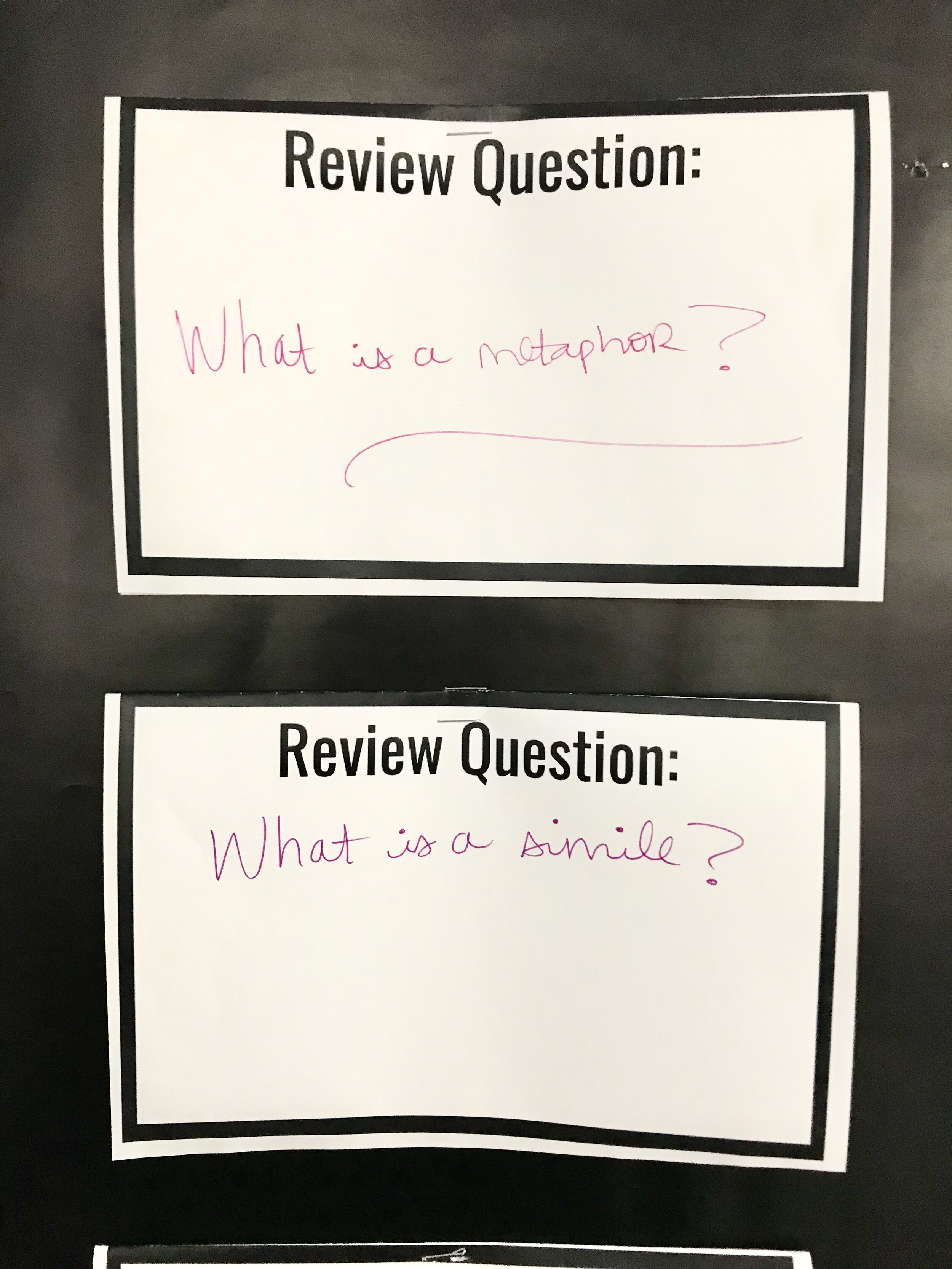We all know that testing is a part of teacher life no matter what subject you teach. We all face unit tests, district tests, benchmark tests, and standardized tests in some regard each and every year. Because of this, we find ourselves seeking out effective ways to prep our students for success. This year, I decided to utilize my bulletin boards as not only tools for display but also as tools for test review.
Here are FIVE test review strategies with bulletin boards to engage and prepare your students for assessment.
Graffiti Wall
Graffiti walls are an excellent way to engage students in class content across disciplines. But they can also be used as means for interactive test prep! It works like this:
◦Students add key ideas, concepts, terms, facts, & information to the wall.
◦Students peruse the wall to review for assessment and write down information they need to review.
◦Teachers can have students select an items from the wall to explain as a review practice.
◦Teachers can also use the graffiti wall to guide class discussions.
For this graffiti wall review activity, students created a graffiti wall for the text Don Quixote in order to prepare for a graded discussion. They added key quotes, themes, characters, symbols, conflicts, images, and historical information to the graffiti wall over a few days of book study in class. As they added to the graffiti wall, they perused the items added to it and formulated “how” and “why” questions to use in the graded discussion. They could also refer to items on the wall during the discussion as needed to brainstorm analysis of key literary elements and devices. After the discussion, I had students select one question from discussion and answer it in paragraph form using textual evidence in order to assess their writing skills. Through the use of the graffiti board, I was able to assess various skills in a high-interest and interactive way.
This same concept can be applied to any content area and any area of study for test prep. To try this strategy, simply use a dry erase or chalkboard, or alternatively use a large piece of butcher paper hung on the wall. For this activity, I placed butcher paper over a dry erase board because I wanted students to be able to use markers other than my very limited supply of dry erase markers (lol!). They used other markers, pens, and pencils to add content to the graffiti wall. Some students even chose to sketch images and add doodle notes (even though not directed to do so) because that’s how they “saw” or interpreted the text. I have created a FREE Graffiti Wall Guide to download as part of the Bespoke ELA FREEBIE Library. Subscribe to Bespoke ELA to gain access to the Freebie Library today!
Interactive Bulletin Board Questions
Another way to use a bulletin board for test review is to create an interactive bulletin board in which students (or the teacher) can post test review questions and answers. Students can use the board as a means for quizzing themselves over key information in order to prepare for assessment. Here’s how it works:
◦Students take a piece of paper (or they can use a template provided by you), and they write a question on the front and the answer inside.
◦Students add it to the bulletin board to create a community review board.
◦Students then peruse the review board to quiz themselves for the assessment. Alternatively, students can write questions without the answers, and students can add the answers as they review the board.
A simple way to create a question template is take a piece of computer paper and fold it in half. The question can be added to the outside flap, and the answers can be written on the inside. There are ways to add extensions to this activity such as having students select a question from the review board to write about or discuss in small groups. Students can even use the interactive questions to guide discussions or play some sort of quiz game with other classes.
QR Code Review Wall
QR codes add another interactive element to bulletin boards and make it easy for the teacher to link to review information online through Google Classroom, Google Forms, websites, or other online documents. They also enable students to quickly access information with their phones so that they can review as they walk between classes or just quickly access review information to take home with them. Not to mention, students have fun with anything that involves technology and their phones! Here’s how to use QR codes for review:
◦The teacher creates QR codes that correspond to review information.
◦The teacher can categorize review information as best fits the assessment and display these categories on the bulletin board with the QR codes.
Exit Ticket Wall
We all know that exit tickets are an excellent way to assess students’ understanding of daily lessons, but they can also be used to prepare and review for assessments. Here’s how to use sticky notes to create an exit ticket wall:
◦Have students complete exit tickets at the end of class and leave them on a bulletin board that is designed for assessment review.
◦Design exit ticket questions so that they include test questions or test prep information.
◦The students then essentially create a test review collage that they can peruse and use as a review board for assessment.
For this exit ticket review activity, students were preparing for a quiz over satirical devices. So, I put three satirical devices on the board that we had discussed in class that day and gave students sticky notes on which to write examples of the devices. They then added their sticky notes to the board under the satirical device category where it belonged as they left class. I had students write their names and class periods on the back of their sticky notes so that I could quickly assess their understanding of the devices at the end of the school day. Students then came in the following day and perused the sticky notes to review examples of the devices. I then had students select a sticky note (not their own) and write an explanation of how that quotation was an example of the device and how the device was used to communicate a thematic message in the text we were studying.
This same concept can be applied to any class for review. All you need is an empty wall space, or board space, and sticky notes! Students will enjoy writing on sticky notes and getting up to move in class!
Question of the Day
This activity is similar to the previous one except that the teacher writes a review question for students to answer. Here’s how it works:
◦The teacher writes a “question of the day” and posts it at the top of the board.
◦Students then leave an answer to the question and attach it to the bulletin board using sticky notes or paper. This can also be used as an “exit ticket” exercise at the end of a class period.
◦This question/answer format can be used as way to review key information for a test.
So the next time you are looking for a new way to review students for assessment, consider these five bulletin board options to engage students in the review process!
Be sure to subscribe to Bespoke ELA for more tips, lessons, and FREEBIES for teaching English Language Arts!
Related Resource
About the Author
Meredith is the founder and creator of TeachWriting.org and Bespoke ELA. She has taught high school English for 10+ years in Dallas, Chicago, and New York City and holds a M.A. in Literature from Northwestern University. She has always had a connection to the written word-- through songwriting, screenplay writing, and essay writing-- and she enjoys the process of teaching students how to express their ideas. An avid tea drinker and anglophile, Meredith enjoys life with her husband, daughter, and sweet pups.























